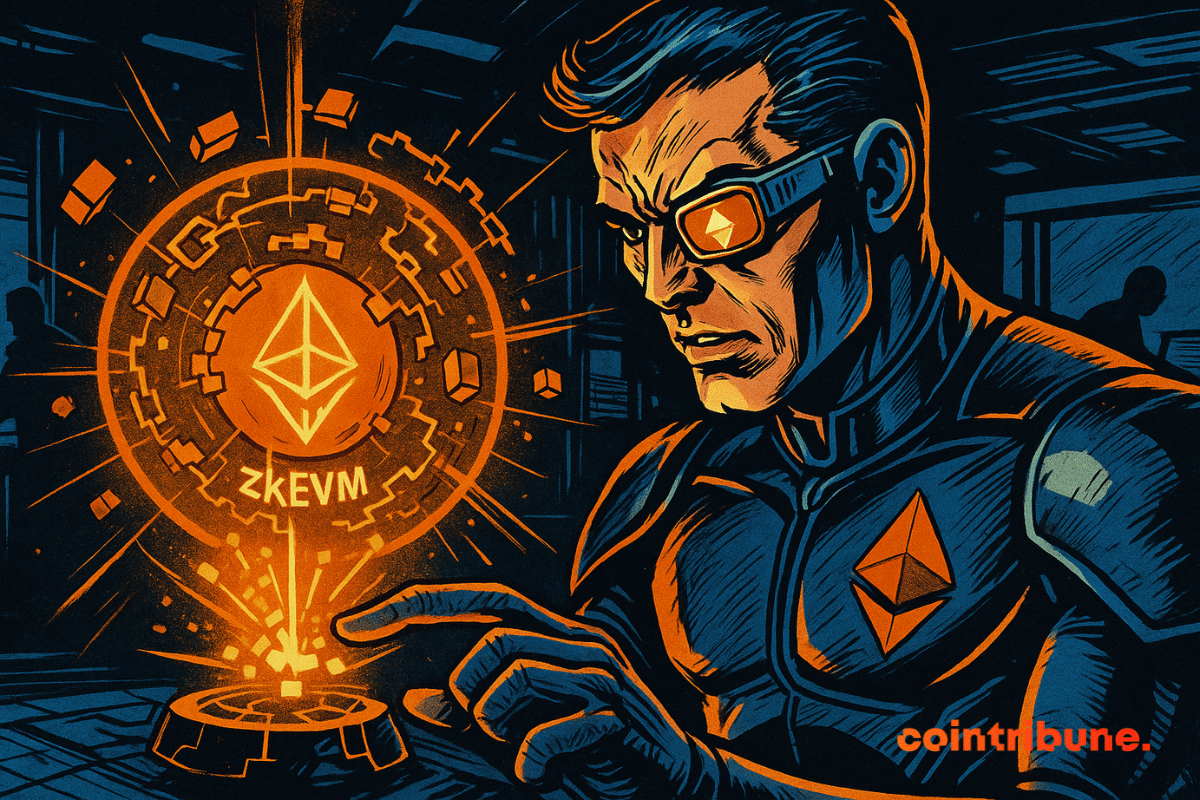Ethereum’s ZkEVM Update: Revolutionizing Scalability and Security

ethereum‘s zkEVM: A Bold Move to Reinforce Its Dominance
Introduction to ethereum‘s Ambitious Transformation
ethereum, spearheaded by the relentless Vitalik Buterin, is determined to break free from monotony. Facing challenges from various fronts, this blockchain is not backing down. As competitors like Solana gain momentum and ZK-rollups become more prevalent, ethereum is gearing up for a significant overhaul. This transformation, marked by the introduction of zkEVM at layer 1, represents a formidable challenge to maintain its leadership in the blockchain space. The countdown to this evolution has officially begun.
Key Highlights of the zkEVM Initiative
- ethereum is set to incorporate zkEVM into its layer 1, enabling block verification without the need to re-execute transactions.
- The cryptographic proofs generated must be compact, secure, rapid, and compatible with commonly available hardware.
- The ethereum Foundation is backing this initiative with audits, bounties, open standards, and continuous community engagement.
- Aiming for a 10-second latency, the system intends to validate 99% of network blocks efficiently.
The Strength of the zkEVM Protocol
The term zkEVM evokes the image of a high-performance engine, and rightly so. ethereum‘s plan to integrate this module directly into its core protocol is revolutionary. Instead of reprocessing each transaction, validators will utilize compact cryptographic proofs for verification. This advancement is poised to change the game. As noted by Sophia Gold from the ethereum Foundation:
“This system will enable ethereum to validate blocks through three independent proofs without recalculating any data. It ensures 128-bit security, with each proof being less than 300 KiB.”
The timeline for this initiative is set for one year. Initially optional, the zkEVM client may become mandatory once a consensus is reached. The design aims to ensure that individual validators can participate using hardware costing no more than $100,000 and consuming less than 10 kW.
ethereum‘s Response to Competitive Pressures
This technological advancement does not occur in isolation. ethereum faces relentless competition from independent rollups, aggressive Layer 2 solutions, and rival blockchains focused on scalability. The stakes are high: maintaining its central role in the blockchain ecosystem. With the native zkEVM, ethereum aims to eliminate reliance on external zk-rollups like Polygon, zkSync, or Starknet, embedding ZK proofs at the very heart of its protocol.
The strategy also emphasizes community involvement. The ethereum Foundation is launching initiatives for audits, bug bounties, and open standards to unify the zkVM ecosystem. The results are promising: improved performance, reduced latency, and proofs validated in under 10 seconds.
“Our goal is to establish ethereum as the largest ZK application globally. The race is on, and zkVMs must deliver their proofs in real-time by Devconnect Argentina,” states Sophia Gold from the ethereum Foundation.
The Pact with Time: Speed, Scalability, and Urgency
The timeline is explicit: by July 2026, ethereum aims to complete this transition. This countdown influences every line of code and technical standard being developed.
The promise of this initiative is clear: native scalability. Blocks will transform into proofs, and validators will become verifiers, all without delays. The requirement for “real-time proving” dictates that 99% of blocks must be validated in under 10 seconds, utilizing hardware accessible to individual users.
Essential Metrics to Remember
- 99% of blocks must be validated within 10 seconds to meet the real-time standard.
- Proofs should remain under 300 KiB, avoiding recursive structures or trusted setups.
- Required hardware must not exceed $100,000 and should consume less than 10 kW.
- Minimum security is set at 128 bits, with plans for gradual scaling.
This new agreement between ethereum and time could position this blockchain as the most efficient infrastructure in the Web3 landscape. The underlying message is clear: scalability is no longer optional; it is essential.
Conclusion: A Call to Action for ethereum
For Vitalik Buterin, the time for complacency has passed. ethereum risks losing its leadership position if it does not accelerate its development. The zkEVM represents more than just a module; it is a strategic response to the challenges posed by competitors and a commitment to speed and efficiency in the blockchain arena.
Disclaimer: The opinions expressed in this article are solely those of the author and should not be interpreted as investment advice. Always conduct your own research before making any investment decisions.







